Teaching Dogs to Fly Planes
Mark Vette, Dog Zen
 Mark Vette from New Zealand has accomplished a record number of World's First With animals including teaching an octopus to take a photograph, having 200 deer stampeding through Auckland, training dogs to act like Ball Boys for Venus Williams and also teaching rescue dogs to drive cars.
Mark Vette from New Zealand has accomplished a record number of World's First With animals including teaching an octopus to take a photograph, having 200 deer stampeding through Auckland, training dogs to act like Ball Boys for Venus Williams and also teaching rescue dogs to drive cars.
So how could he top that? Well, now he's gone and managed to train dogs how to pilot a plane in a bid to prove just how capable rescue dogs can be.
It all started when Mark got a call from a producer in the UK who knew that he taught dogs to drive cars and now wanted Mark to teach dogs to fly for the series, Dogs Might Fly.
The process took two months and involved training rescue dogs on a flight simulator which used colored signals to indicate which direction the dog should fly; blue to turn left, red to turn right and white to continue straight ahead.
 Rescue dogs Reggie, Shadow & Alfie all learned to fly a plane, with Shadow being the first to complete a figure 8, making history! Not bad for 3 dogs that nobody wanted. See the video here.
Rescue dogs Reggie, Shadow & Alfie all learned to fly a plane, with Shadow being the first to complete a figure 8, making history! Not bad for 3 dogs that nobody wanted. See the video here.
It proves that rescue dogs are worth so much more than a passing glance. Given a home and lots of love, they will reward you more than you could ever imagine.
So could we be seeing our canine companions flying to the moon one day?
"There's certainly more to go, I haven't had the call to take one into a space rocket yet but I'll keep the option open," claims Vette.
http://www.MarkVette.com
The Misunderstood Pit Bull
Bronwen Dickey, Pit Bull
 The youthful and charismatic Bronwen Dickey has made her fight about the Pit Bull. The years of research that went into her new book, Pit Bull, easily qualifies her as an expert on the breed that is banned from many big U.S. cities.
The youthful and charismatic Bronwen Dickey has made her fight about the Pit Bull. The years of research that went into her new book, Pit Bull, easily qualifies her as an expert on the breed that is banned from many big U.S. cities.
When Bronwen Dickey brought her new dog home, she saw no traces of the infamous viciousness in her affectionate, timid pit bull. Which made her wonder, how had the breed, beloved by Teddy Roosevelt, Helen Keller, TV's "Little Rascals," come to be known as a brutal fighter?
Her search for answers takes her from nineteenth-century New York City dogfighting pits, the cruelty of which helped spark the founding of the ASPCA, to early twentieth-century movie sets where pit bulls cavorted with Fatty Arbuckle and Buster Keaton; from the battlefields of Gettysburg and the Marne, where pit bulls earned presidential medals, to desolate urban neighborhoods where the dogs were brutalized.
 Bronwen's book, Pit Bull, tells the fascinating true story of how a popular breed of dog became the most demonized, and supposedly the most dangerous of dogs, and what role humans have played in the transformation.
Bronwen's book, Pit Bull, tells the fascinating true story of how a popular breed of dog became the most demonized, and supposedly the most dangerous of dogs, and what role humans have played in the transformation.
Believe it or not, Dachshunds are actually known to bite more than any other dog breed. However, due to their size, they don't inflict much damage and are therefore left alone by the media. But when a Pit Bull bites someone, the media jumps on it.
Over the years, many different breeds of dogs have been characterized as dangerous dogs. The previous breeds included Rottweilers, German Shepherds and Doberman Pinschers, who all had their time in the spotlight as being dangerous breeds.
In her research, interestingly Bronwen found that these trends went back hundreds of years. In 1877, the most vilified dog in America by far was the Spitz, which included the White Pomeranian. At that time Spitz's were popular with German immigrants and with the ladies. There were tons of them in New York City, so according to the bite statistics; naturally most bites came from these dogs. So when there was a rabies outbreak, it was decided that the Spitz must be the carrier. There was then this enormous furor to eradicate the Spitz. Veterinarians even included this in their medical journals that the Spitz was the most dangerous breed because it was the prime rabies vector.
Bronwen states that this just goes to show that statistics aren't the best indicator of danger. It all depends upon the population and the time period.
 From Bronwen's research, she found that in the 1980's when there were many scare stories about killer Pit Bulls, a number of cities across the United States decided to implement Pit Bull bans as a way of making them seem tough on crime and protecting the public. Bronwen states that it was an empty measure, as these cities had much lager problems going on than dog bites.
From Bronwen's research, she found that in the 1980's when there were many scare stories about killer Pit Bulls, a number of cities across the United States decided to implement Pit Bull bans as a way of making them seem tough on crime and protecting the public. Bronwen states that it was an empty measure, as these cities had much lager problems going on than dog bites.
Multiple studies from multiple countries also show that breed bans do nothing to affect dog bites. While it's true that a dog that doesn't exist can't bite you, but if dog bites are still skyrocketing, then you really haven't done anything to improve public safety at all.
The biggest lesson Bronwen learned in her years of research was not to attribute anything to all or nothing. So when something gets this controversial, you will have people who will say it's all in the genetics, or it's all in how they're raised. Science has told us for many decades that it's always an interaction of both. But with dogs, we certainly do know that the temperament and genetics, and the combination of genetics and environment of an individual dog and it's relationship with an individual person, will be by far the greatest determinant into how that dog turns out.
http://www.bronwendickey.com
Diseases You Can Get From Your Pets
Doc Halligan, Lucy Pet Foundation
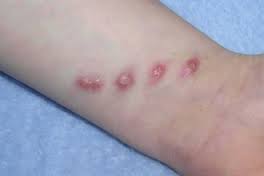 Doc Halligan has some creepy news about Zoonotic disease that humans can get from their cats, dogs and even turtles. While the good doctor doesn't want you to be scared of your pet, she says it's good to be aware of the risks. And pregnant women - listen up!
Doc Halligan has some creepy news about Zoonotic disease that humans can get from their cats, dogs and even turtles. While the good doctor doesn't want you to be scared of your pet, she says it's good to be aware of the risks. And pregnant women - listen up!
Zoonotic diseases are those diseases and infections that are naturally transmitted between animal and man. While the biggest zoonotic disease in the world is rabies, there are hundreds of others.
Zoonotic diseases are something you should be concerned about even if you don't have cats or dogs, but go where dogs and cats are or have been, which is pretty much everywhere.
So what are the odds of you catching one of these diseases? Doc Halligan states it depends upon your lifestyle and how good you are on prevention. Zoonotic diseases are 100-percent preventable. You don't need to go into panic mode, but these diseases are something to think about.
The ten most common zoonotic diseases are:
1. Cat scratch fever
2. Giardiasis
3. Hookworms
4. Lyme diseases
5. Ringworm
6. Roundworm
7. Rabies
8. Scabies
9. Tapeworms
10. Toxoplasmosis
Cat Scratch Fever
90-percent of patents have been exposed to a cat, while 75-percent of these have actually been bitten, scratched or licked. Most affected individuals are 20 years of age. 75-80-percent of the cases are diagnosed between September and February with a peak incidence in December and is seen in more woman than men. Cats get cat scratch fever from fleas, which is more prevalent in kittens because their immune systems are not as developed. You can help prevent the disease by practicing good flea control.
This can also be prevented by never playing with your cat with your bare hands and keep their nails trimmed.
Other sources of infection have been scratches from other species including dogs, squirrels and goats and from wounds induced by crab claws, barbed wire and plant material.
Symptoms of cat scratch fever can be flu-like and your lymph nodes may get enlarged. In two to four months, your body will rid itself of the disease.
 Toxoplasmosis
Toxoplasmosis
Cats develop Toxoplasmosis by ingesting the muscle tissue of prey or meat contaminated with the Toxoplasma cysts. Most animals, as well as humans, show no signs of infection. The cat is the only animal that the Toxoplasma gondii parasite can complete its entire life cycle and unborn kittens as well as immunosuppressed cats are at an increased risk of infection. Most warm-blooded animals can be infected but are called intermediate hosts. This means that the life cycle stops within the muscle tissues at the cyst stage. So ingestion of infected animal tissues such as undercooked meat is the number one route of contamination to humans and cats. Because water and soil can become infected with Toxoplasma oocysts from cat feces, activities such as gardening without gloves is much more risky to an expecting mother than simply owning a cat. Also, eating steak tartar poses more of a risk than having a furry friend in the house.
Unfortunately, many cats are surrendered to shelters by pregnant women on the advice of their doctors. The Center for Disease Control estimates that only 1-percent of all cats in the United States have this disease, while it is higher in other countries.
When a cat comes into contact with toxoplasma and ingests it, they will shed it in their feces. It then takes about one to five days for this to get into their stool. A human would than actually have to eat the cat stool to get the disease, so the chance of you getting it is very, very slim. If you're pregnant just wear gloves and wash your hands when coming in contact with the litter box. Also be careful if your cat has diarrhea, as there may be some residual stool on their bottoms, which can come off on your hands if you handle them. Again, just wash your hands when coming in contact with your cat.
You can help your cats from contracting the disease by not giving them raw meat, bones, entrails or unpasteurized milk. Also, outdoor cats are at a much higher risk as the hunting and eating of wild prey can cause a cat to become infected. Believe it or not, flies and cockroaches can be carriers of Toxoplasma and should not be eaten by cats.
Humans can also prevent infection by wearing gloves when gardening, thoroughly cooking meat, washing their hands after handling raw meant, drinking only pasteurized milk and avoiding contact with litter boxes. Also, washing your hands before eating and after contact with a cat is recommended. In addition, litter boxes should be cleaned daily as the feces can contain infective oocysts or eggs. Again, humans must ingest these eggs to become infected.
Signs of illness in a cat can be nonspecific signs of anorexia, lethargy, depression, fever and weight loss. Other symptoms include vomiting, diarrhea, seizures, muscle pain and lameness and eye problems. The disease can come on rapidly. The eyes, lungs and gastrointestinal systems are more commonly affected than the nervous system.
Your vet needs to do a thorough history, physical exam and laboratory testing to accurately diagnose the disease. Blood tests can tell you whether your cat has been exposed, but these tests often need to be repeated to determine if the infection is active or chronic. Sometimes x-rays and testing fluids from your cat is necessary. Cats only shed the infective oocysts for a period of two weeks after contracting Toxoplasma.
Feline leukemia, feline aids, feline infectious peritonitis, blood parasites, steroids and chemotherapy can compromise the cat's ability to fight off infection and makes treating the disease more difficult. In general though, most cats are treated on an outpatient basis with antibiotics that are continued two weeks beyond the resolution of clinical signs. Cats with eye problems sometimes need eye drops to resolve the symptoms. Usually cats improve within 48 hours of treatment. Follow-up exams by your vet are necessary to determine response and decide when the medications can be stopped.
They key to preventing these diseases is to practice good handling habits. After petting your cat or cleaning the litter box, just wash your hands.
The Mission of The Lucy Pet Foundation is to reduce pet overpopulation by having mobile spay/neuter clinics across the country and to support causes that benefit animal welfare. The Lucy Pet Foundation currently has two buses that travel around Southern California focusing on spaying and neutering. These buses are state of the art surgery units. Their next focus is in generating more funds to expand the work of these buses and have more across the country.
 The Lucy Pet Foundation not only offers free and reduced spays and neuters, they also do microchipping, vaccines and de-wormings. Spaying and neutering is not only great for pet population control, but it has been proven that an animal will live on an average of 40-percent longer after having this surgery.
The Lucy Pet Foundation not only offers free and reduced spays and neuters, they also do microchipping, vaccines and de-wormings. Spaying and neutering is not only great for pet population control, but it has been proven that an animal will live on an average of 40-percent longer after having this surgery.
Upcoming Clinics
Free Spay & Neuter for Los Angeles City Residents! Here is a list of upcoming free or reduced fee mobile spay and neuter clinics in California:
Call for more information, questions and to reserve space to get on the list: (855) 499-5829
June 4, 15: Superior Store, 3480 S. La Brea, Los Angeles, CA Spay/Neuter APPOINTMENT ONLY; Vaccine Clinic 10:00am-2:00pm
June 6, 20: East Valley Shelter, 14409 Vanowen St., Van Nuys, CA Spay/Neuter APPOINTMENT ONLY; Vaccine Clinic 10:00am-2:00pm
June 7: Algin Sutton Rec Center, 8800 S. Hoover St., Los Angeles, CA Spay/Neuter APPOINTMENT ONLY; Vaccine Clinic 10:00am-2:00pm
June 9, 23: West Valley Shelter, 20655 Plummer Street, Chatsworth, CA Spay/Neuter APPOINTMENT ONLY; Vaccine Clinic 10:00am-2:00pm
June 10: Vallarta Supermarket, 10175 N. San Fernando Rd., Tacoma, CA Spay/Neuter APPOINTMENT ONLY; Vaccine Clinic 10:00am-2:00pm
June 12: Superior Store, 133 West Avenue 45, Los Angeles, CA Spay/Neuter APPOINTMENT ONLY; Vaccine Clinic 10:00am-2:00pm
June 14, 29: Superior Store, 9801 Laurel Canyon Blvd., Pacoima, CA Spay/Neuter APPOINTMENT ONLY; Vaccine Clinic 10:00am-2:00pm
June 17, 26: Food 4 Less, 1748 West Jefferson Blvd., Los Angeles, CA Spay/Neuter APPOINTMENT ONLY; Vaccine Clinic 10:00am-2:00pm
June 21: Food 4 Less, 5100 N. Figueroa St., Los Angeles, CA Spay/Neuter APPOINTMENT ONLY; Vaccine Clinic 10:00am-2:00pm
June 25: Vallarta Supermarket, 13820 Foothill Blvd., Sylmar, CA Spay/Neuter APPOINTMENT ONLY; Vaccine Clinic 10:00am-2:00pm
June 28: Hansom Dam Recreation Center, 11480 Foothill Blvd., Los Angeles, CA Spay/Neuter APPOINTMENT ONLY; Vaccine Clinic - 10:00am-2:00pm
County and City Vouchers accepted. But remember, you must get on a list to have your pet seen at these locations. Please call The Lucy Pet Foundation toll free at 1-855-499-5829 or Email: Info@lucypetfoundation.org to schedule an appointment, or register at the events.
See the current list of clinics at http://www.lucypetfoundation.org.
http://www.lucypetproducts.com
Frequently Asked Questions About Cloning
Melain Rodriguez, ViaGen Pets
 Now that ViaGen Pets is cloning companion animals right here in the U.S., lots of people have questions. ViaGen Pets' Melain Rodriguez covers some Frequently Asked Questions and talks about the logistics behind genetic preservation, the first step in the process of cloning an animal.
Now that ViaGen Pets is cloning companion animals right here in the U.S., lots of people have questions. ViaGen Pets' Melain Rodriguez covers some Frequently Asked Questions and talks about the logistics behind genetic preservation, the first step in the process of cloning an animal.
Melain frequently receives calls from pets parent who have a special pet that's like no other pet they've ever had. They have formed a special bond with this pet and they can't imagine living without them, so they would like to continue that bond with a potential clone.
She often has people ask her if they can clone a pet that has already passed away. Melain states, yes, but under certain circumstances. Of course the best chance of a successful genetic preservation is when a biopsy is done when the pet is still alive. However, if the pet has passed away and the pet parent is considering the possibility of maybe cloning them some day, then the most important thing the pet parent and veterinarian need to know is that the pet should placed in a refrigerator - not frozen. Putting the pet in a freezer will damage the tissues. Once the body has been frozen, there is nothing that can be done. Biopsies on the deceased pet should be taken as soon as possible and be received by ViaGen Labs within five days.
ViaGen Pets has emergency instructions on their website, so if a pet passes away and a pet parent doesn't know what to do, they can go to the ViaGen Pets website and click on the emergency tab and find step-by-step instructions, which they can provide to their veterinarian. These instructions will tell the vet what to do, how to take a biopsy sample and how to ship them to ViaGen Labs in an emergency situation.
Not sure about cloning? You can still have your pet's DNA genetically preserved, which can be used for cloning at any time down the road, or maybe even for the potential therapeutic implications for these cells in the future.
To learn more, please visit ViaGenPets.com or call Melain personally at 1-888-876-6104.
 Ticks Hitchhike on City Dogs Too - Dr. Debbie
Ticks Hitchhike on City Dogs Too - Dr. Debbie
Ticks are common parasites known to infect people, pets and spread disease. Over 850 tick species exist worldwide, although fewer than a dozen species are of risk to pets in the U.S. But here in Las Vegas, pet owners often dismiss the existence of ticks with the likes of Bigfoot or the Loch Ness Monster. Think ticks are only a problem for pets that travel or visit the mountains? Think again.
The Tick Tale
Ticks are parasites known to infect mammals, reptiles and birds and feed on their host's blood. Although of tiny size, ticks ingest 200 to 600 times their weight in a blood meal.
Ticks are attracted to a host's movement, body warmth or exhaled carbon dioxide and then latch on. Through this feeding behavior they can transmit diseases to pets such as Lyme disease, Rocky Mountain spotted fever, Ehrlichia, Babesia and Tularemia. Disease transmission takes some time and may occur after 36 to 48 hours of feeding behavior.
Some ticks can live months or up to a year off its host without a feeding, so year-round prevention is important for pets at risk for continued exposure.
Battling Ticks
There are many topical tick control products available for pets. Speak with your veterinarian for an product that is effective and safe with your pet's individual health in mind. Cats are sensitive to some ingredients, may develop toxicity, and should never be treated with a product labeled only for dogs. Additionally, pet owners using multiple products on their pet should first consult with their veterinarian to ensure safe use of combined products.
In addition to topical tick control, environmental treatment with foggers, sprays or pest control service should be considered for heavy infestations. Limit tick habitat zones by maintaining landscaping, avoiding overgrown grass and keeping shrubs and plants trimmed.
Pet Screening
Perform daily tick checks during tick season. Examine your pet for ticks in areas that the parasites hang out - around the head, behind ears, armpits and between toes.
When removing a tick, avoid handling it directly. Wear gloves or handle with Kleenex since ticks can pass infections to people as well. Grasp the tick with tweezers close to the skin. Extract the tick by pulling straight out of skin. Don't squeeze, twist or leave any legs behind. Disinfect the area and dispose of ticks in rubbing alcohol.
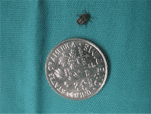 Here's a photo of a typical tick, born and bred in Las Vegas and recently extracted from one of my Shih Tzu patients named Kane. Kane never leaves the state, doesn't hike in the mountains, and enjoys the comforts of a house-dog lifestyle. A tick was discovered on Kane after a day of supervising his owner's yard work and shrub trimming.
Here's a photo of a typical tick, born and bred in Las Vegas and recently extracted from one of my Shih Tzu patients named Kane. Kane never leaves the state, doesn't hike in the mountains, and enjoys the comforts of a house-dog lifestyle. A tick was discovered on Kane after a day of supervising his owner's yard work and shrub trimming.
Maybe Kane's story will be an eye-opener for city dwelling pet owners. Pet parasites like fleas, ticks and mosquitoes still lurk in that urban jungle.
Visit the Dogs & Ticks website for more information ticks, diseases and prevention.
Featured veterinarian known as "Dr. Debbie" on national pet radio program, Animal Radio. Ebook author of "Yorkshire Terriers: How to Be Your Dog's Best Friend"; "Pugs: How to Be Your Dog's Best Friend"; "Mini Schnauzers: How to Be Your Dog's Best Friend"; and "Shih Tzu: How to Be Your Dog's Best Friend."
http://www.drdebbie.net
Top Backyard Hazards for Your Pets
Robert Semrow, Animal Radio Listomania
 It's that time of year of year that even the most indoorsey person heads outdoors for sunshine, friendly get-togethers and backyard activities that make the rain, sleet, snow and winter hibernation all worthwhile. This time of year brings families together and many potential hazards for your pets as well. So, as my official ode to summer safety we offer you these friendly and serious reminders:
It's that time of year of year that even the most indoorsey person heads outdoors for sunshine, friendly get-togethers and backyard activities that make the rain, sleet, snow and winter hibernation all worthwhile. This time of year brings families together and many potential hazards for your pets as well. So, as my official ode to summer safety we offer you these friendly and serious reminders:
Summer BBQ's and get-togethers are usually filled with good friends; good times and good eats - for humans. The number one rule for Summer BBQ party club is to discuss the rules of Summer BBQ party club with family, guests and yes, even your pets.
 Make sure that you are always supervising your two and four legged children in the backyard during a party. The foods that we enjoy can be very dangerous to our pets and no one wants to end the party with an emergency trip to the veterinarian's office. So remind everyone that Fido is well fed and doesn't need to eat off your plates and to please properly dispose of them. Additionally, those happy libations that include alcohol must be kept out of reach of curious pets who don't know the difference between a refreshing glass of water or a dangerous glass of alcohol.
Make sure that you are always supervising your two and four legged children in the backyard during a party. The foods that we enjoy can be very dangerous to our pets and no one wants to end the party with an emergency trip to the veterinarian's office. So remind everyone that Fido is well fed and doesn't need to eat off your plates and to please properly dispose of them. Additionally, those happy libations that include alcohol must be kept out of reach of curious pets who don't know the difference between a refreshing glass of water or a dangerous glass of alcohol.
This next hot tip is critically important and that is to supervise and train your pets not to let curiosity get the best of them around BBQ's, fire pits and other flammable areas. We all have enjoyed the scrumptious smells coming off a BBQ and we often congregate around it while cooking the food. To our pets, this is just another area that screams for investigation. Protect your pets by keeping vigilance and always discouraging them from being around the BBQ at any time.
 Many folks enjoy a quick swim in the pool to cool off on a hot day. Some may even dog paddle. However, the term is misleading as not all dogs can swim and not all dogs enjoy swimming. Remember, keep an eye on your pets the same way you would your human children. If your pets do go in the water, teach them how to exit the pool safely as well.
Many folks enjoy a quick swim in the pool to cool off on a hot day. Some may even dog paddle. However, the term is misleading as not all dogs can swim and not all dogs enjoy swimming. Remember, keep an eye on your pets the same way you would your human children. If your pets do go in the water, teach them how to exit the pool safely as well.
Another area of concern during the summer is the hot cement, asphalt and sand that we all wear flip flops or other footwear to protect our feet from. Your pet's pads, which are very important to their health, are at risk of burning quickly, so if it's too hot for your feet it's certainly too hot for theirs.
Also keep their water bowls full with fresh water, provide them an area of shade to cool down in and if possible give them a cot or raised mesh bed to rest in that let's their entire body cool down after activities.
Summer is a great time to spend with the family and your pets love being outside. With a little bit of care and awareness, you'll have another summer of great memories and family time.
Share your summertime safety tips and more on our Animal Radio Facebook Page.
http://petworldinsider.com
 The Dogfather's Grooming Tip with Joey Villani
The Dogfather's Grooming Tip with Joey Villani
Re-Growing Hair on Tips of Ears and Tail
Believe it or not, this is a common problem with some dogs. In this case, it is a client of Joey's who has a Chihuahua that can't grow hair on the tips of its ears and the tip of its tail. Her dog is healthy and before she took him to the vet, she wanted to know if there was anything she could do.
Joey explains that lack of hair in these areas is very common and might be caused by many different things, but the main cause is lack of circulation. These areas tend to stay colder than the rest of the dog's body.
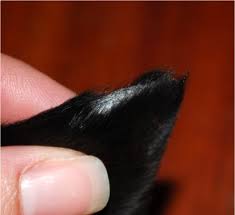 A good breeder's trick is to coat these areas with Vaseline every day. You don't have to apply a great amount, just enough to cover the bald spots. What this will do is hold the heat in and increase the circulation, which will then stimulate hair growth.
A good breeder's trick is to coat these areas with Vaseline every day. You don't have to apply a great amount, just enough to cover the bald spots. What this will do is hold the heat in and increase the circulation, which will then stimulate hair growth.
After applying Vaseline for about a week, you should start to see new hair growth. Once you start seeing peach-like fuzz growing, you can stop applying the Vaseline.
 Animal Radio News - Lori Brooks
Animal Radio News - Lori Brooks
De-Sexing Reduces Aggression
De-sexing dogs vastly reduces aggression and the associated risk of dog bites, according to a new study done in Australia. De-sexing is what they call spay or neutering there. Australian Researchers found aggression and the risk of bites was up to nine times lower and supported the push for mandatory de-sexing of pets in the country under the Dog and Cat Management Bill in Parliament. Others issues tackled by the bill include mandatory microchipping, increased penalties for dangerous dogs and requiring dog breeders to be registered to tackle a rise in puppy "mills."
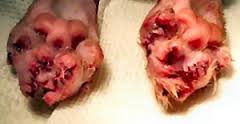 Bill Would Make Declawing Illegal
Bill Would Make Declawing Illegal
A bill currently being debated in the New York legislature would make it illegal to declaw cats. Advocates of the bill, ranging from the Humane Society to individual veterinarians, argue that declawing is cruel because it's not just amputating nails, but also portions of ligaments and tendons. If the bill passes, New York would become the first state to outlaw declawing procedures.
Drug Approved to Stimulate Appetites in Dogs
The U.S. Food and Drug Administration has approved the first drug to stimulate appetite in dogs. The drug, Entyce, is a flavored oral liquid that works by mimicking the hunger hormone and will be launched in February of next year. It's estimated that nearly 10 million dogs suffer from a lack of appetite. Earlier this year, Aratana, the company that developed the drug, was given approval for Gallipran, which is a therapeutic drug for dogs designed to control pain and inflammation associated with osteoarthritis.
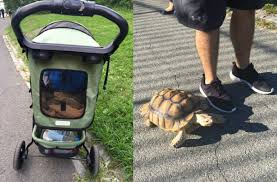 Hundreds Reply to Ad For Tortoise Walker in NY
Hundreds Reply to Ad For Tortoise Walker in NY
New York City is filled with things that make people stare and when Henry the tortoise turned up in a stroller in Central Park recently for his daily outing, it turned more than a few heads. The 17-pound African Sulcata tortoise is the pet of a 20-something-year-old woman in Manhattan. Henry's life was pretty quiet until she posted on Craigslist to advertise for a tortoise walker. We've all seen dog walkers, especially in big cities, but tortoise walkers are pretty hard to come by. So, Henry's mom only expected a few responses, until the listing went viral and hundreds of people from all over the world applied for the $10 an hour job, which ultimately went to a young woman who had tortoise experience because she had worked in a pet store. She takes Henry to the park by stroller and then watches him as he roams freely eating his favorites: dandelions and grass. Eventually Henry will outgrow his stroller and may need a luggage cart or something, as male African Sulcatas reach a length of more than 30 inches and tip the scales at more than 200 pounds, but they can't be in temps below 42 degrees. Yes, you can rescue one, from the American Tortoise Rescue, which is based in Malibu, California if you're on the west coast.
Drug May Slow Down Dog's Aging
It's one of the hardest things for people who have dogs - watching their furry kids grow old and slow down in what seems like such a short amount of time. An ongoing study out of the University of Washington now hopes to gain new understanding of how and why those signs of aging happen, and hopefully help to extend the years of a dog's healthy life. The Dog Aging Project is shooting to be the largest study on dog aging ever done. It is a project geared toward ensuring longer and healthier lives for man's best friend and also at shedding light on human longevity. In the first phase of the study of the drug rapamycin (which is used to prevent organ transplant rejection in humans) showed large breed, middle-aged dogs that took the drug had improved heart function. But before testing on companion dogs, rapamycin was safety tested on flies, worms, mice and yeast and increased their life spans of by 25-percent! The objective of the next part of the project is to follow 10,000 companion dogs of all kinds, as they age - not in labs - but dogs that actually live with their owners at home. If the drug tests conclusively show slowing down of canine aging, it opens up the possibility of drug solutions for the adverse effects of human aging. If you would like to find out about enrolling your dog in the next phase of the study you'll find more information at DogAgingProject.com.
 Fake Service Animals Big Problem
Fake Service Animals Big Problem
Many disabled Americans with certified service animals, mostly dogs, say they now have an unfair burden because some people misrepresent service animals in public in order to gain access to areas where most animals are not allowed in public. This problem presents itself more and more every day now with non-certified and untrained animals, or even ESA's, (Emotional Support Animals), wearing certified service animal vests that are easily and inexpensively purchased online. But, did you know there are now laws in many states making that a crime. For example, in Florida, it is illegal to falsely register a service animal. The penalty carries a $500 fine, and up to 60 days in jail. Many business owners and those who work in public places say they don't know how to tell if an animal is a legit, highly trained and certified service animal. The cost of having a qualified dog trained to be a guide take can take two years, and cost more than $50,000. Business owners and public workers have cause to be concerned. You could be sued! The ADA (Americans with Disabilities Act) says business owners can ask only two questions of handlers who bring animals into a public place. Those questions are one: "Is the dog a service animal required because of a disability?" and two. "What work or task has the dog been trained to perform?" That's it. You cannot ask anything else and remember it is not legal to ask about the type of medical condition a person may have. Those who train and own service dogs say an easy way to gauge a service animal's credibility is its demeanor in public. If you see a dog in a person's arm or purse that is barking or not well mannered, a legitimate training facility wouldn't put that dog out as a service animal. Under the Americans with Disabilities Act, only service animals such as dogs and seeing-eye horses, may go anywhere their handler goes in public.
 Couple Gets Married as 1,100 Cats Watch
Couple Gets Married as 1,100 Cats Watch
A Canadian couple celebrated their collective love for animals by getting married in a very unique place. They had the first ever wedding at California's Cat House on the Kings as 1,100 cats watched. The Cat House is the largest cage free, no-kill cat sanctuary in North America. The bride says they are both animal lovers and after she first visited the Cat House four years ago she was so touched by all the cats that she added a return trip to her bucket list. She was able to chalk off marriage and a return trip in one weekend.
 Listen to the entire Podcast of this show (#861)
Listen to the entire Podcast of this show (#861)



 Rescue dogs Reggie, Shadow & Alfie all learned to fly a plane, with Shadow being the first to complete a figure 8, making history! Not bad for 3 dogs that nobody wanted. See the
Rescue dogs Reggie, Shadow & Alfie all learned to fly a plane, with Shadow being the first to complete a figure 8, making history! Not bad for 3 dogs that nobody wanted. See the  The youthful and charismatic Bronwen Dickey has made her fight about the Pit Bull. The years of research that went into her new book, Pit Bull, easily qualifies her as an expert on the breed that is banned from many big U.S. cities.
The youthful and charismatic Bronwen Dickey has made her fight about the Pit Bull. The years of research that went into her new book, Pit Bull, easily qualifies her as an expert on the breed that is banned from many big U.S. cities. Bronwen's book, Pit Bull, tells the fascinating true story of how a popular breed of dog became the most demonized, and supposedly the most dangerous of dogs, and what role humans have played in the transformation.
Bronwen's book, Pit Bull, tells the fascinating true story of how a popular breed of dog became the most demonized, and supposedly the most dangerous of dogs, and what role humans have played in the transformation.  From Bronwen's research, she found that in the 1980's when there were many scare stories about killer Pit Bulls, a number of cities across the United States decided to implement Pit Bull bans as a way of making them seem tough on crime and protecting the public. Bronwen states that it was an empty measure, as these cities had much lager problems going on than dog bites.
From Bronwen's research, she found that in the 1980's when there were many scare stories about killer Pit Bulls, a number of cities across the United States decided to implement Pit Bull bans as a way of making them seem tough on crime and protecting the public. Bronwen states that it was an empty measure, as these cities had much lager problems going on than dog bites. Doc Halligan has some creepy news about Zoonotic disease that humans can get from their cats, dogs and even turtles. While the good doctor doesn't want you to be scared of your pet, she says it's good to be aware of the risks. And pregnant women - listen up!
Doc Halligan has some creepy news about Zoonotic disease that humans can get from their cats, dogs and even turtles. While the good doctor doesn't want you to be scared of your pet, she says it's good to be aware of the risks. And pregnant women - listen up! Toxoplasmosis
Toxoplasmosis Now that ViaGen Pets is cloning companion animals right here in the U.S., lots of people have questions. ViaGen Pets' Melain Rodriguez covers some Frequently Asked Questions and talks about the logistics behind genetic preservation, the first step in the process of cloning an animal.
Now that ViaGen Pets is cloning companion animals right here in the U.S., lots of people have questions. ViaGen Pets' Melain Rodriguez covers some Frequently Asked Questions and talks about the logistics behind genetic preservation, the first step in the process of cloning an animal. Ticks Hitchhike on City Dogs Too -
Ticks Hitchhike on City Dogs Too - Here's a photo of a typical tick, born and bred in Las Vegas and recently extracted from one of my Shih Tzu patients named Kane. Kane never leaves the state, doesn't hike in the mountains, and enjoys the comforts of a house-dog lifestyle. A tick was discovered on Kane after a day of supervising his owner's yard work and shrub trimming.
Here's a photo of a typical tick, born and bred in Las Vegas and recently extracted from one of my Shih Tzu patients named Kane. Kane never leaves the state, doesn't hike in the mountains, and enjoys the comforts of a house-dog lifestyle. A tick was discovered on Kane after a day of supervising his owner's yard work and shrub trimming. It's that time of year of year that even the most indoorsey person heads outdoors for sunshine, friendly get-togethers and backyard activities that make the rain, sleet, snow and winter hibernation all worthwhile. This time of year brings families together and many potential hazards for your pets as well. So, as my official ode to summer safety we offer you these friendly and serious reminders:
It's that time of year of year that even the most indoorsey person heads outdoors for sunshine, friendly get-togethers and backyard activities that make the rain, sleet, snow and winter hibernation all worthwhile. This time of year brings families together and many potential hazards for your pets as well. So, as my official ode to summer safety we offer you these friendly and serious reminders:
 Make sure that you are always supervising your two and four legged children in the backyard during a party. The foods that we enjoy can be very dangerous to our pets and no one wants to end the party with an emergency trip to the veterinarian's office. So remind everyone that Fido is well fed and doesn't need to eat off your plates and to please properly dispose of them. Additionally, those happy libations that include alcohol must be kept out of reach of curious pets who don't know the difference between a refreshing glass of water or a dangerous glass of alcohol.
Make sure that you are always supervising your two and four legged children in the backyard during a party. The foods that we enjoy can be very dangerous to our pets and no one wants to end the party with an emergency trip to the veterinarian's office. So remind everyone that Fido is well fed and doesn't need to eat off your plates and to please properly dispose of them. Additionally, those happy libations that include alcohol must be kept out of reach of curious pets who don't know the difference between a refreshing glass of water or a dangerous glass of alcohol.
 Many folks enjoy a quick swim in the pool to cool off on a hot day. Some may even dog paddle. However, the term is misleading as not all dogs can swim and not all dogs enjoy swimming. Remember, keep an eye on your pets the same way you would your human children. If your pets do go in the water, teach them how to exit the pool safely as well.
Many folks enjoy a quick swim in the pool to cool off on a hot day. Some may even dog paddle. However, the term is misleading as not all dogs can swim and not all dogs enjoy swimming. Remember, keep an eye on your pets the same way you would your human children. If your pets do go in the water, teach them how to exit the pool safely as well.
 The Dogfather's Grooming Tip with
The Dogfather's Grooming Tip with  A good breeder's trick is to coat these areas with Vaseline every day. You don't have to apply a great amount, just enough to cover the bald spots. What this will do is hold the heat in and increase the circulation, which will then stimulate hair growth.
A good breeder's trick is to coat these areas with Vaseline every day. You don't have to apply a great amount, just enough to cover the bald spots. What this will do is hold the heat in and increase the circulation, which will then stimulate hair growth. Animal Radio News -
Animal Radio News -  Hundreds Reply to Ad For Tortoise Walker in NY
Hundreds Reply to Ad For Tortoise Walker in NY
 Fake Service Animals Big Problem
Fake Service Animals Big Problem
 Couple Gets Married as 1,100 Cats Watch
Couple Gets Married as 1,100 Cats Watch